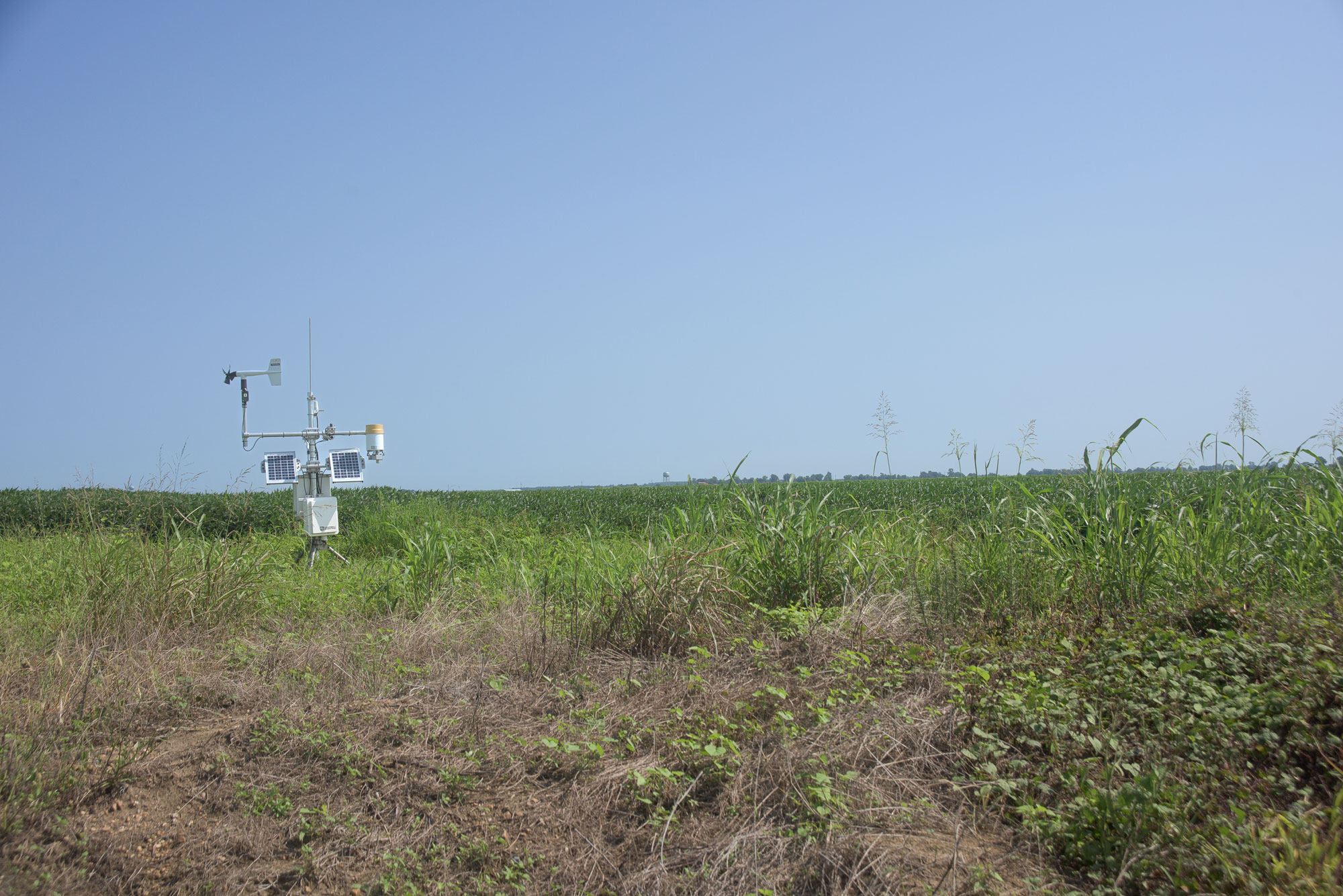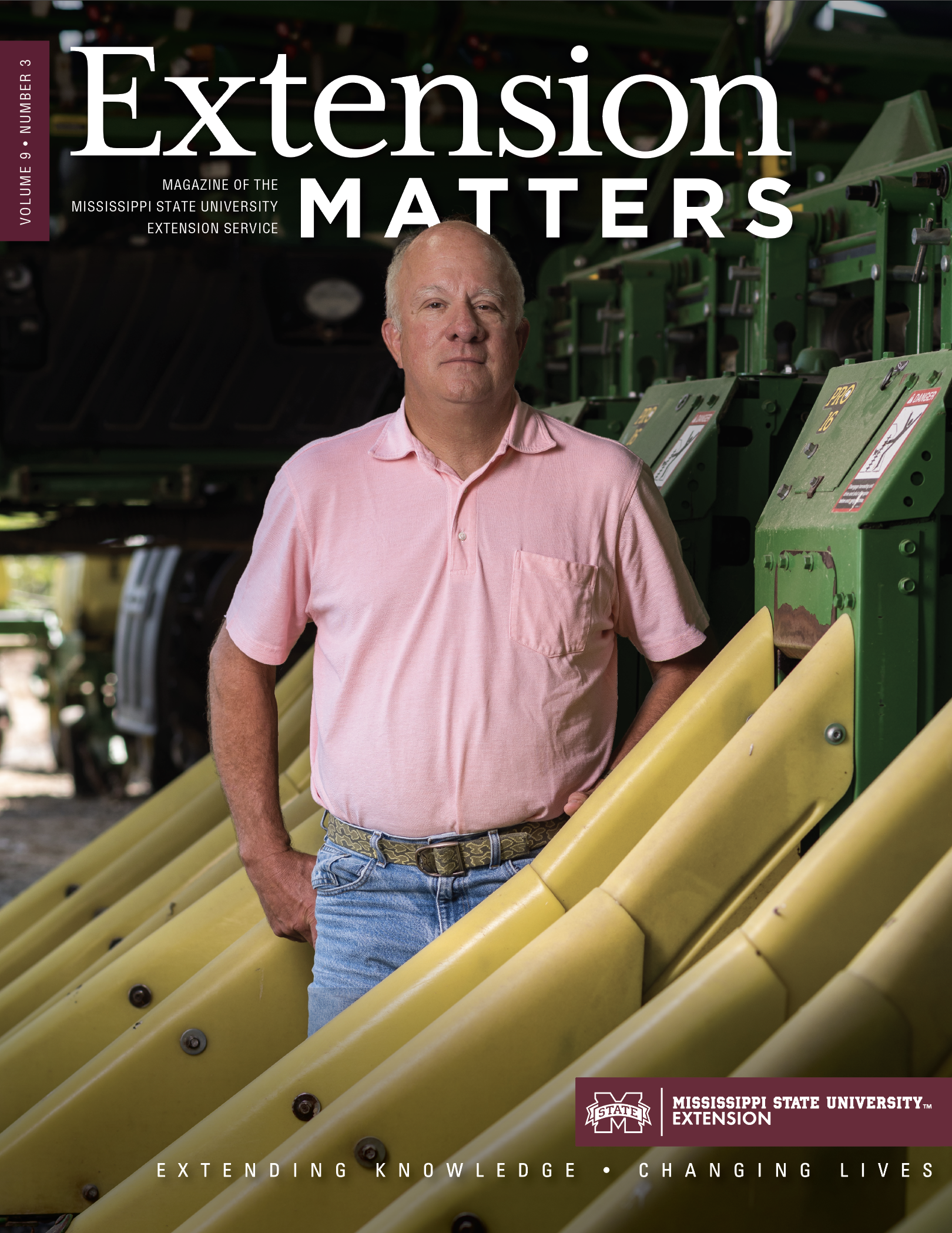Stafford's Station

Stafford Shurden, Sunflower County producer
Stations connect to Delta Ag Weather Center to provide data for growers
Story by Nathan Gregory • Photos by Kevin Hudson
Stafford Shurden’s weather station is ideal for monitoring conditions on his row crop farm, but he uses it even more during hunting season than growing season.
“If you open my browser on my phone,” he says, “it’s always on that weather station. The neighbors use it, too.”
He can also pull up any of the other 37 fixed stations or numerous mobile stations connected to the Delta Agricultural Weather Center, based at the Delta Research and Extension Center in Stoneville.
The weather center is a joint effort between the Mississippi Agricultural and Forestry Experiment Station and the Mississippi State University Extension Service, which support the center through a cooperative agreement with the U.S. Department of Agriculture’s Agricultural Research Service. The weather center is also supported by Cotton Inc., the Mississippi Corn Promotion Board, the Mississippi Rice Promotion Board, and the Mississippi Soybean Promotion Board.
The weather center first began because the National Weather Service (NWS) shuttered its Stoneville facility in 1996. After it closed, volunteers maintained the historical data that had been kept there since 1915. Without the center and its stations, the closest weather updates from NWS were coming from Greenwood, some 40 miles southeast of Drew, where Shurden lives and works.
Grant funding allowed the weather center to become operational again in 1998.
“The center offers a variety of data and tools on its website for growers and researchers,” explains Marcus Silva, program coordinator for the weather center. “The site includes current daily weather information in real time; historical weather information; planting date information for cotton, corn, rice, and soybeans; and pond temperature predictions, as well as other tools.”
Shurden grows soybeans, corn, and rice in Sunflower County, located in the Mississippi Delta close to roughly half of the mobile and fixed stations reporting back to the center. He also operates a general store and restaurant in downtown Drew.
Silva contacted Shurden in 2021 and proposed that the weather station install a center in one of his rice fields.
“Marcus called me one day out of the blue,” Shurden recalls. “He told me he didn’t have any stations close to rice farming and he wanted to see if one could help with water use. For me to go out and buy that, it would have been something I probably wouldn’t have done.”
The station has been advantageous for him in just as many ways off the farm as it is on. Its data guides where he hunts during duck and deer season.
Delta Agricultural Weather Center
• Real-time updates every 15 minutes
• Hourly observations
• Daily records
• 38 permanent weather stations across the state
• 20 mobile stations at MAFES variety trial sites
• Up to 6 stations added annually
Patrons using the weather center:
• agricultural students
• row crop producers
• truck crop producers
• agricultural researchers
• nonfiction and fiction writers
Click here to visit the Delta Agricultural Weather Center.
“You may be shocked at the temperature and wind differences sometimes between Greenwood and Drew,” Shurden says. “And, in the wintertime, if you get a cold north wind, it’s a lot colder than you realize.
“Duck hunting is mainly about temperature, but, if there’s a lot of rain and standing water in a particular place, we want to know,” Shurden adds. “Deer hunting is the same way—we want to look at which direction the wind is blowing before we go out there and sit in a stand.”
Shurden also monitors the data when he is away from town, which is frequent between harvest and planting. The station is a major boon for him if he is away during growing season because it allows him to make informed farming decisions when not on the farm.
“The big thing is convenience and peace of mind. If I’m somewhere else and it’s dry, sometimes I wonder if it rained on the farm,” he says. “Since the system is hooked up to soil sensors, I can time my irrigation if my crops need more water.”
MSU Extension has also conducted demonstration trial plots on Shurden’s farm, and he used Extension’s soil testing lab regularly when he grew produce. He counts Extension as a critical resource for growers like him.
“The Extension Service is a great asset for so many people, and your taxpayer dollars are paying for it,” he says. “The services are there, and they’re going to get used by somebody. It might as well be you.”



